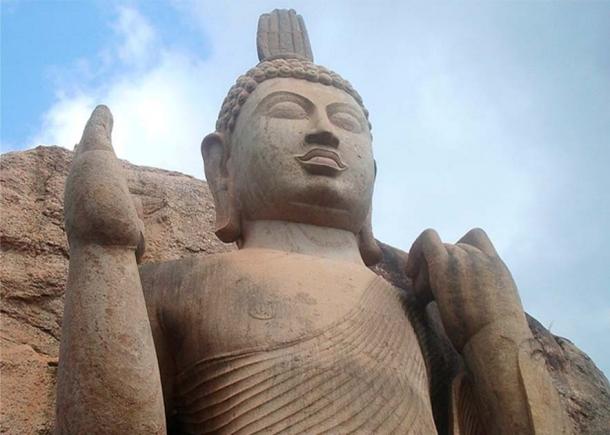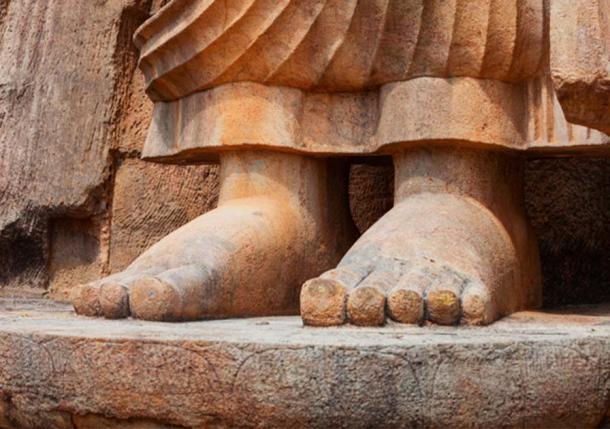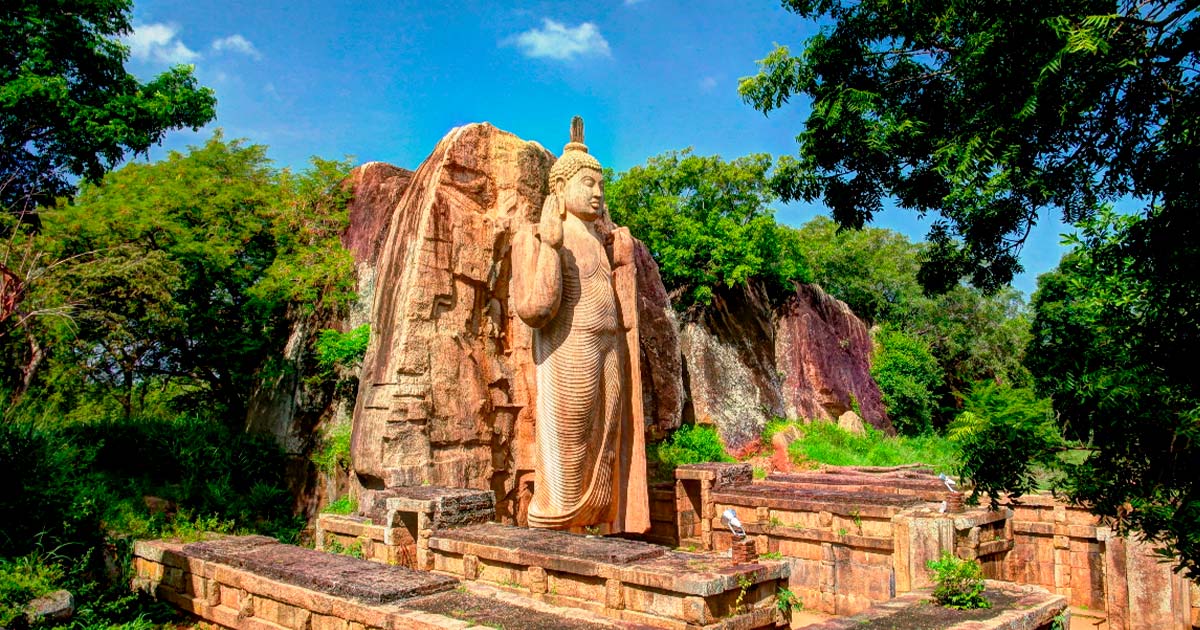Avukana Buddha - Sri Lanka’s Most Important Buddhist Pilgrimage Site
Relics of Buddhism are always magnificent to behold. They dot the East Asian world, and are the testament to the devotion and ancient history of its peoples. One such relic is the magnificent statue of Avukana Buddha, considered to be one of Sri Lanka’s most important Buddhist sites. Almost in the geographical center of this nation, it is a popular tourist destination, as well as a pilgrimage site for devoted Buddhists. Who built this statue?
Avukana Buddha Stands Vigilant
This awe-inspiring statue of the Buddha is situated in the small village of Avukana, itself close to the town of Kekirawa. It is positioned in a picturesque area, a small clearing in an otherwise forested area, overlooking the ancient Kala Wewa reservoir to the east. Its location was clearly selected on purpose, to convey a sense of grandeur and to inspire visitors. Originally, the statue was housed in a purpose-built temple. However, over the course of centuries, the temple has been destroyed and no longer exists, while the statue remains.
- Could There be a Third Bamiyan Buddha, Hidden for Centuries?
- The Ancient Rock City of Sigiriya: Fit for a King and Built by the Gods
The statue represents Buddha standing, with his right hand raised in a gesture of blessing. The pose is meant to convey reassurance, and is a special stance known as a variation of the Abhaya Mudra, a symbolic ritual pose. Above him is a special circular halo, called Mandorla, itself richly decorated with carved lotus petals and other motifs. A peaceful and smiling face is represented on the Buddha, presented in truly stunning detail.

Close up of the Avukana Buddha’s face. Fine detail and precision denoting high skill and craftsmanship of ancient Sri Lanka. (CC BY-SA 3.0)
All this is all the more stunning when we consider the fact that the statue is carved out of a single large granite rock face! That’s right, the Avukana Buddha is all of 13 meters (42 ft) tall, and is one of the tallest Buddha statues in Sri Lanka. It was carved as a single piece, in situ, while the remaining cliff face behind it was carved in a form of Cyclopean Masonry, which is supposed to convey the sense of a mountain. Creating such a monumental piece was certainly a challenge - especially when you are faced with a titanic block of stone from which you have to “release” a stunning work of art such as this one.
A Relic of Sri Lanka’s Middle Ages
Popular opinion agrees that the Avukana Buddha was carved in the 5th century AD, during the reign and at the behest of King Dhatusena of Anuradhapura, Sri Lanka’s first King of the Moriyan Dynasty. Legend states that Dhatusena commissioned a famous master sculptor named Sena, who completed the statue in just six months, using nothing but a hammer and a chisel. Whether or not this is correct, scholars cannot say with certainty. It is more likely that the statue was built sometime in the 8th century AD, as a donative inscription at the back of the statue, dated to this period, was found in 1951.
Either way, the statue is made in the distinct style called the Anuradhapura School. It is famed for the realistic natural depictions of the human form. It also shows elements from the neighboring Gandara and Amaravati schools of art from India. Still, it retains a great deal of uniqueness, and is famous for its exquisite attention to detail. The Buddha is portrayed very realistically, with slender and elongated proportions, wearing a fine flowing robe that clings to his body. Every muscle, piece of clothing, and other details were carved with absolute precision.
Overall, the Avukana Buddha differs somewhat from the other Buddha statues of Sri Lanka, and as such it holds a special place in the nation’s cultural heritage. Over the centuries, it was subject to a lot of scholarly interest, and received attention from artists, historians, and archeologists alike. The exquisite skill with which it was made, and the masterful rendition of the Buddha are both testaments to the skill and efficiency of ancient Sri Lankan craftsmen.
- The Pala Empire: An Indian Dynasty Ruled by Protectors of Buddhism
- A 2,500-year-old Site Blessed by Buddha - Kelaniya Raja Maha Vihara

Feet of the Avukana standing statue of Buddha in Sri Lanka. (pzAxe/ Adobe Stock)
A Masterpiece of Ancient Sri Lankan Art
Today, the statue is the pride of Sri Lanka, and is widely hailed as one of the finest examples of ancient Sinhalese sculpture. It is protected by the government and considered the national treasure of Sri Lanka, as well as one of its national symbols. Due to this, the government carried out some restoration work over the years, and added special metal support structures that prevent the statue from toppling over during earthquakes.
The Sri Lankan government announced plans in 2017 to build a special visitor center and a museum near the statue, in order to boost tourism and provide visitors with more information about the statue’s history. Either way, if you ever find yourself in Sri Lanka, this popular tourist site is one you cannot miss!
Top image: The Colossal Statue of Avukana Buddha in Kekirawa, Sri Lanka. Source: homocosmicos/Adobe Stock
References
Briggs, P. 2018. Sri Lanka. Bradt Travel Guides.
De Thabrew, V. 2013. Monuments and Temples of Orthodox Buddhism in India and Sri Lanka. AuthorHouse.
Dhammika, S. 2008. Sacred Island: A Buddhist Pilgrim's Guide to Sri Lanka. Buddhist Publication Society.

















